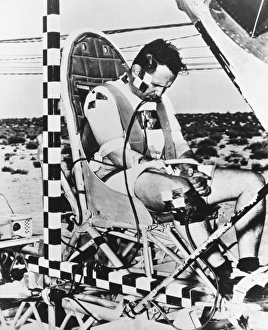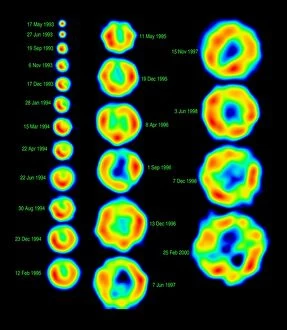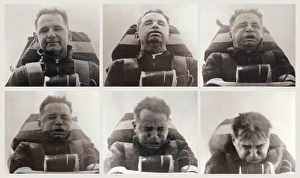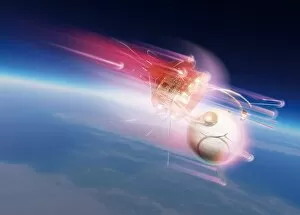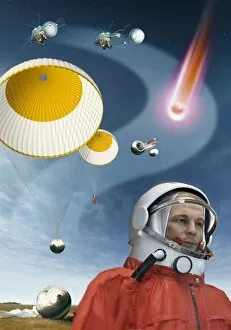Deceleration Collection
"Deceleration: The Science of Slowing Down in Extreme Conditions" In the pursuit of pushing human limits
All Professionally Made to Order for Quick Shipping
"Deceleration: The Science of Slowing Down in Extreme Conditions" In the pursuit of pushing human limits, John Stapp's iconic image during G-force testing serves as a testament to the importance of deceleration. As we delve into the evolution of supernova 1993J from 1993-2000, we witness nature's own deceleration process, captivating us with its celestial beauty. From the vastness of space to our very own atmosphere, even Space Shuttle Orbiters rely on deceleration mechanisms for safe re-entry. Just like John Stapp on that high G-force test sled, these shuttles experience intense forces that necessitate controlled slowing down. John Stapp himself was an aviation researcher who understood the significance in preserving human life. His determination to explore extreme conditions paved the way for safer and more efficient transportation systems. Looking back at history, Vostok 1 spacecraft's re-entry in 1961 showcases how crucial deceleration is when returning from space. Yuri Gagarin's return to Earth exemplifies humanity's triumph over immense speeds and forces through strategic braking techniques. Whether it be exploring outer space or conducting groundbreaking research on Earth, understanding and harnessing deceleration is paramount. It allows us to navigate treacherous environments while ensuring our safety and progress. As we unravel the mysteries of acceleration and velocity, let us not forget about its equally vital counterpart – deceleration. From John Stapp defying gravity on a sled to witnessing cosmic phenomena like supernovas unfold before our eyes, this concept reminds us that sometimes slowing down can lead to incredible discoveries and advancements in science and technology.

